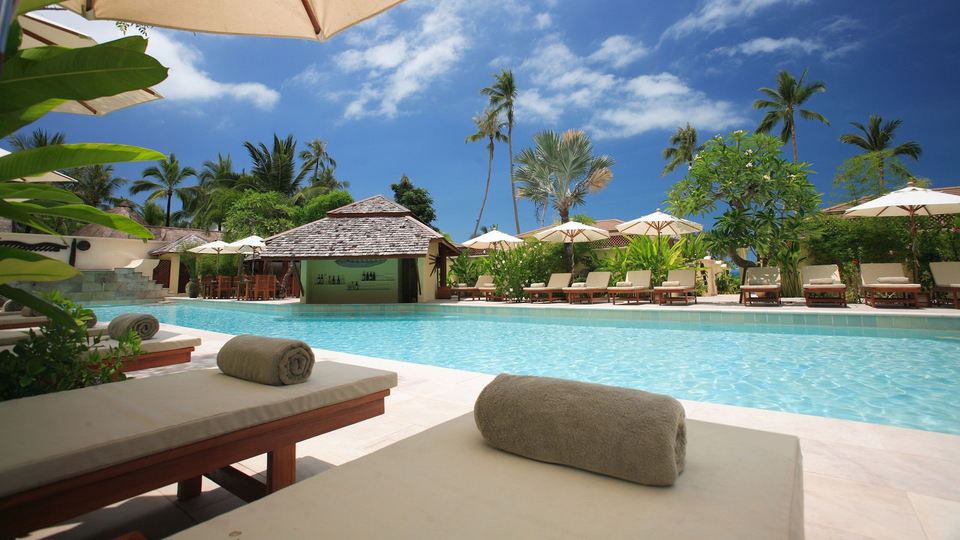How Interactive Content Can Enhance Your Hotel Website

Generational, technological, and recent consumer behavior shifts continue to change the landscape of hospitality marketing, raising the importance of staying ahead of the curve when it comes to how prospective travelers find and book their trips and hotel accommodations.
According to Bloomberg, Millennials (born between 1981 and 1996) now account for more than 31.5 percent of the global population while Gen Z (born between 1997 and 2015) has pushed ahead, accounting for more than 32 percent of the world’s population of nearly 8 billion people. These two generations alone spend hundreds of billions of dollars each year on travel, and one study showed that 52% of Millennials use review websites and blogs to research their options while 87% of Millennials use Facebook to inspire their travel and bookings.
Now, more than ever, offering prospective travelers different types of content—through website pages, a hotel blog, and social media—is essential. Throughout our series on vanity websites, we’ve talked about showing off your hotel property’s unique personality with photos and videos and enhancing your ability to be discovered through SEO. Today, we want to show you how creative content can enhance the user experience and provide your hotel with numerous benefits.
Blogs helps enhance keywords and provide original content
In our look at improving the SEO for your hotel property, we discussed how a blog can not only provide travelers with unique content on restaurants to enjoy in your area or events going on, but also allows your property to rank for unique keywords that people might be searching for.
Here is another example, this time a Holiday Inn in Vancouver. This property’s blog has great content about Black History Month, different restaurants nearby and things to do during the winter season.

This blog strategy helps gain additional visibility for keywords you might not be able to rank for throughout your branded site by creating more content and a lot more pages. The ability to create content both flexibly and quickly is one of the key benefits of a vanity site.
As you think about a blogging strategy, make sure to keep a few things in mind:
- Come up with topics and content that travelers might find helpful and interesting. Google doesn’t appreciate keyword stuffing and you don’t want to rank for content if it’s not worthwhile for the potential guest.
- Think of what guests might want to know about your property or city. Will they be interested in nearby restaurants? Are there must-see attractions? Being mindful of what guests might search for when booking travel can help you write strong content.
- Be a thought leader, not a salesperson. If you provide quality content, you’re providing the service travelers are looking for. They’re already on your website. Maybe offer the ability to sign up for a newsletter or mailing list instead of pushing them to book a room. If they like what they see and read, they might book anyway.
Videos show off your property’s unique features
We’ve talked about video several times during this series. Videos are a great way to show off what your hotel has to offer in a more interactive way. Even better is sprinkling those assets throughout your content and not requiring the user to go to a particular page to view them.
As the pandemic continues on, businesspeople are turning to online research to find the perfect spot for their next company meeting or event and brides are doing the same to look for the right wedding venue for their big day. Virtual tours allow those potential guests to feel like they’re at your property and get a sense of your property in ways static websites can’t provide. According to a study done by Best Western, properties that had a virtual tour on their website saw a 48% increase in bookings compared to those that didn’t. Oftentimes, this isn’t possible on a cookie-cutter branded website.
Here’s an example of a property that has their virtual tour, allowing users to interact with the floor plan and visually see all the different layouts. Travelers can truly get a feel for what it looks like and interact with it much better than just a PDF.

Third-party platforms enhance the user experience
When it comes to food and beverage, interactive third-party integrations like Resy or OpenTable allow your property’s restaurant(s) to take reservations. Even simple things like the example below—posting your different menus or daily and weekly specials—provides guests valuable information.

With this flexibility, the hotel can go into the content management system and update this information quickly and simply. Trying to do this through a branded website would likely be difficult. Sometimes you don’t even have a place for this information and the turnaround times to get the task accomplished makes it all the more challenging. Being able to have this level of detail is really beneficial for the end user and ultimately helps keep them active on your website.
Social integrations allow your hotel to be seen
Let’s go back to the beginning where we told you that more than 60% of the world’s population is now made up of Millennials and Gen Z. These generations are increasingly on social media platforms, including Facebook (which boasts more than 2.7 billion users) and Instagram (which has more than 1 billion users). If you aren’t on social media, you’re missing a big audience.
According to a study done by Facebook several years ago, 67% of users on Instagram use it to look for inspiration of new places to travel. Meanwhile, Statista says 36.5% of travelers in general use social media platforms such as Facebook, Instagram, and Twitter to come up with ideas and inspiration for travel.
If you look at this property you can see their branded website doesn’t have anything about Facebook, Instagram, or any of the social platforms that they’re on.

But if we look at their vanity website, we can see up top that they’re able to very prominently promote the different social platforms that they have, in this case Facebook, Twitter, Instagram, and Pinterest. They’re using Pinterest in a great way to help promote meetings and weddings at their property. Your property certainly has a lot to show off, and there is a wide audience that would love to see it.

As you can see from the examples above, a vanity website provides immense flexibility to create content, show off video, and create connections with different platforms ranging from social media to food and beverage integrations to meetings and events platforms.
In the final part of our vanity website series, we’ll talk about the enhanced data and reporting that comes with a vanity website. In the meantime, if you’re thinking about a vanity website for your hotel, please get in touch with us today or visit our blog for more hospitality marketing trends.

